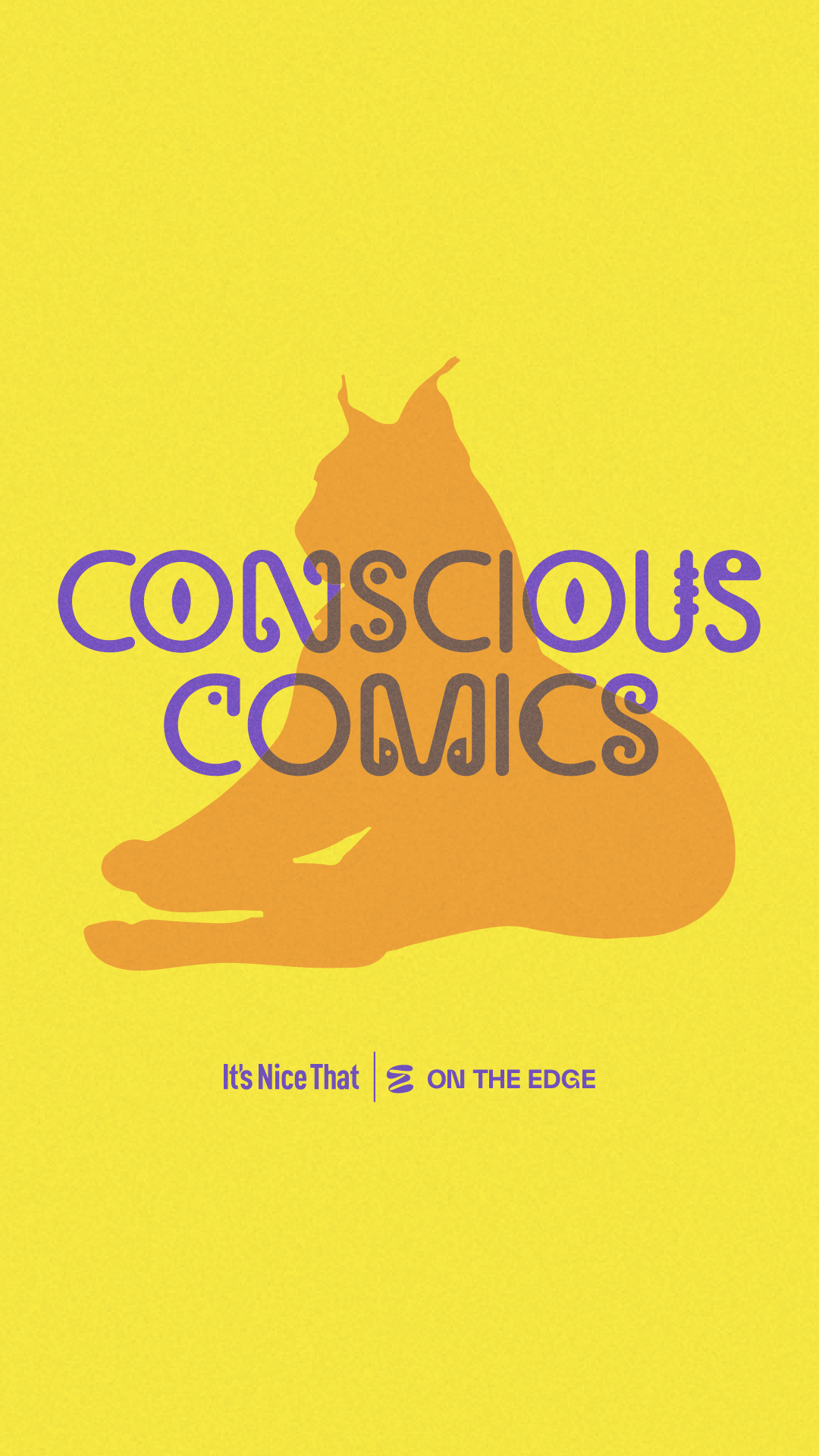
In collaboration with It’s Nice That and conservation group On the Edge, we co-commissioned a series of comics highlighting vulnerable species fighting for survival. Artists Min Heo, Cory Feder, Jer Dee, and María Medem brought these stories to life.
The campaign was social-first, using organic Instagram carousels as comic strips, allowing viewers to learn intuitively about endangered species.
On the Edge, a team of storytellers and scientists, aims to reconnect humanity with nature, highlighting our detachment from the natural world and its destruction. Our commissioned artists illustrated the struggles of four species, whose fates often go unnoticed.
My role - Creative Lead at It’s Nice That
Additional credits:
Identity Design - Ciaran Birch
Writer - Daniel Milroy Maher
Project Manager - Lucy Orr
Full article on itsnicethat.com
The campaign was social-first, using organic Instagram carousels as comic strips, allowing viewers to learn intuitively about endangered species.
On the Edge, a team of storytellers and scientists, aims to reconnect humanity with nature, highlighting our detachment from the natural world and its destruction. Our commissioned artists illustrated the struggles of four species, whose fates often go unnoticed.
My role - Creative Lead at It’s Nice That
Additional credits:
Identity Design - Ciaran Birch
Writer - Daniel Milroy Maher
Project Manager - Lucy Orr
Full article on itsnicethat.com

Desert Rain Frog by Min Heo
“Like many people on the internet, I was immediately charmed by the Desert Rain Frog’s cute but grumpy appearance,” says Min Heo. “However, learning more about its story saddened me… We are oblivious to the fact that we are destroying its home and environment through human behaviour.” In Min’s comic, we see the rotund figure of the frog staring into a mirror, dreaming of clean sandy shores, fresh air and an abundance of bugs to eat. However, after emerging from its home in the dunes, the reality it faces is very different.
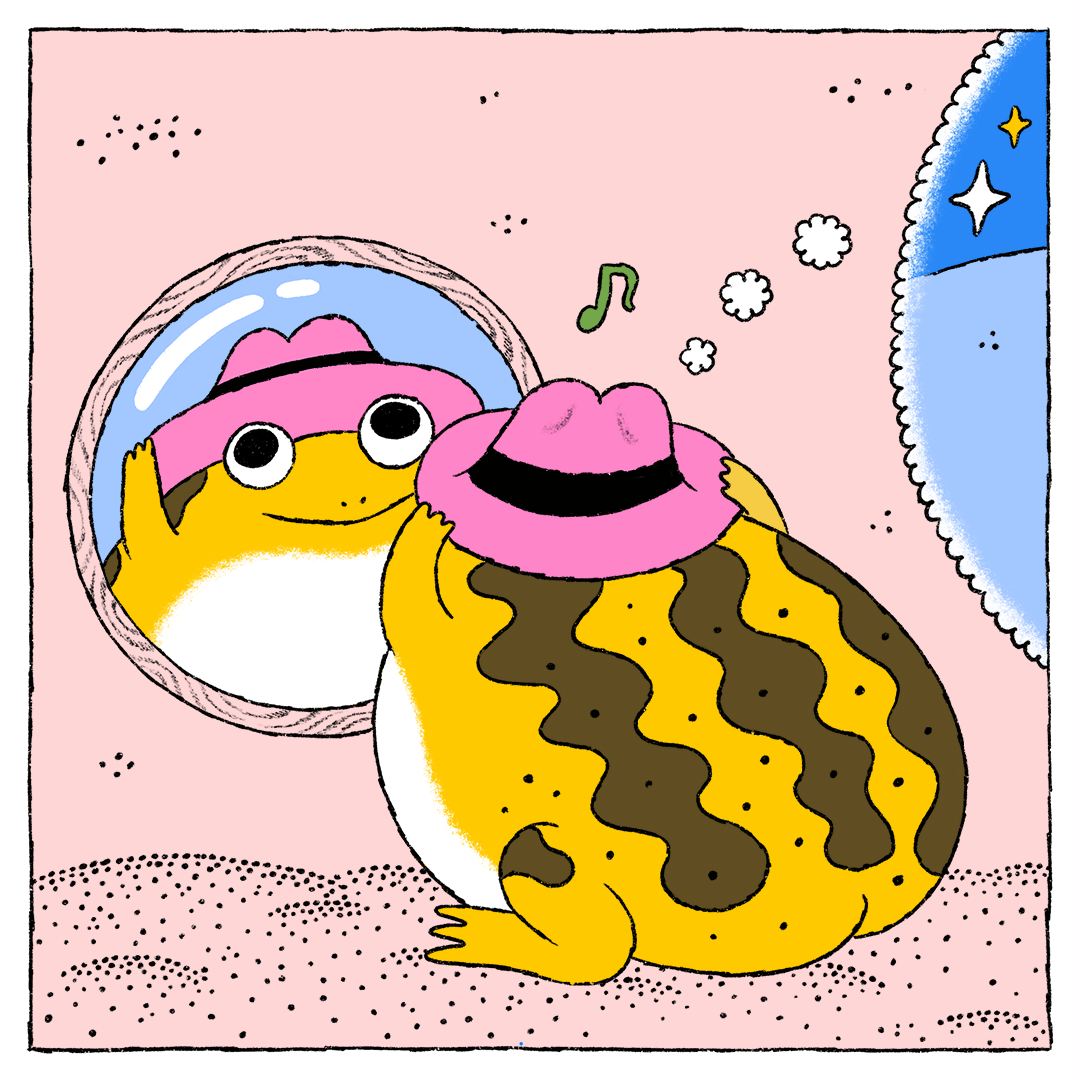
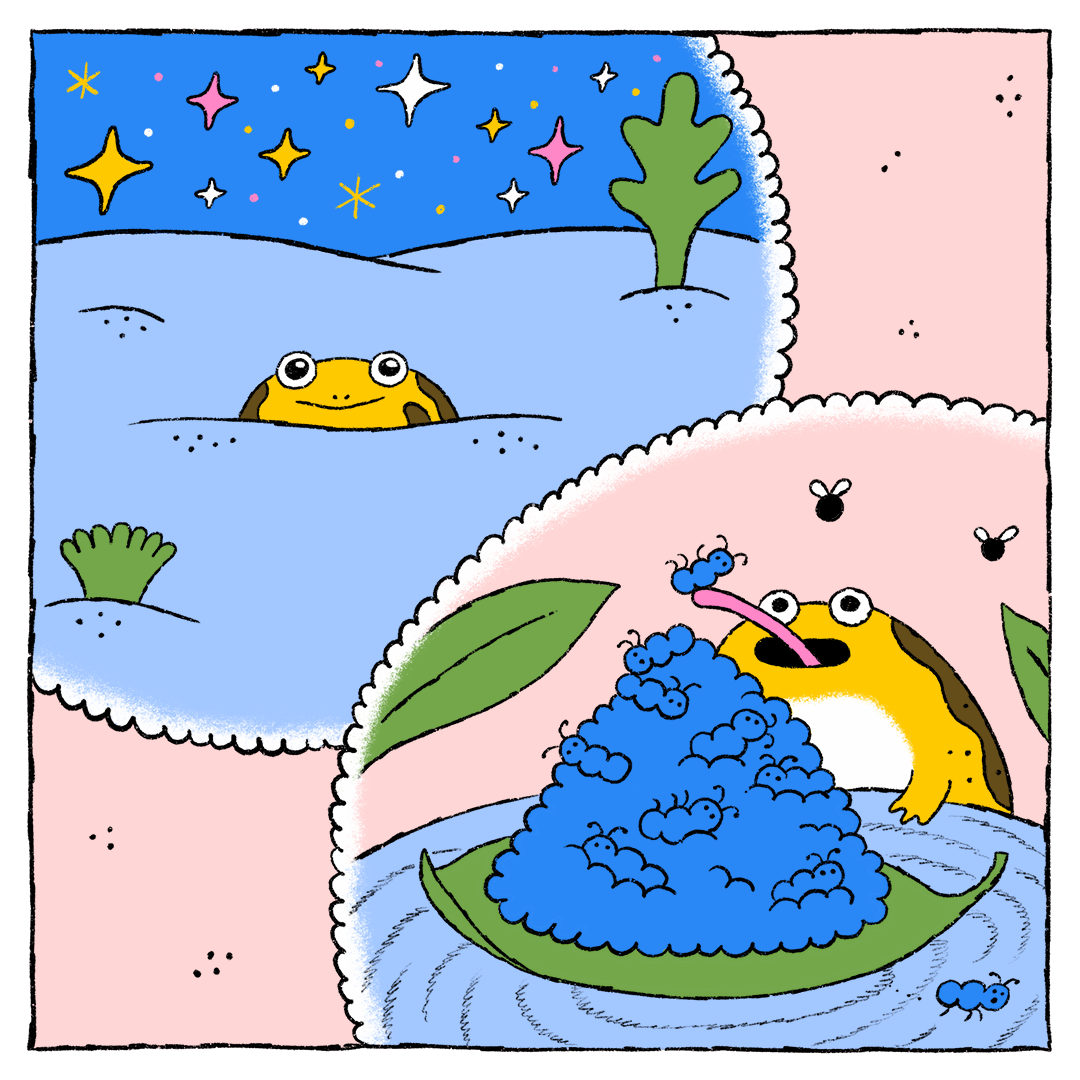


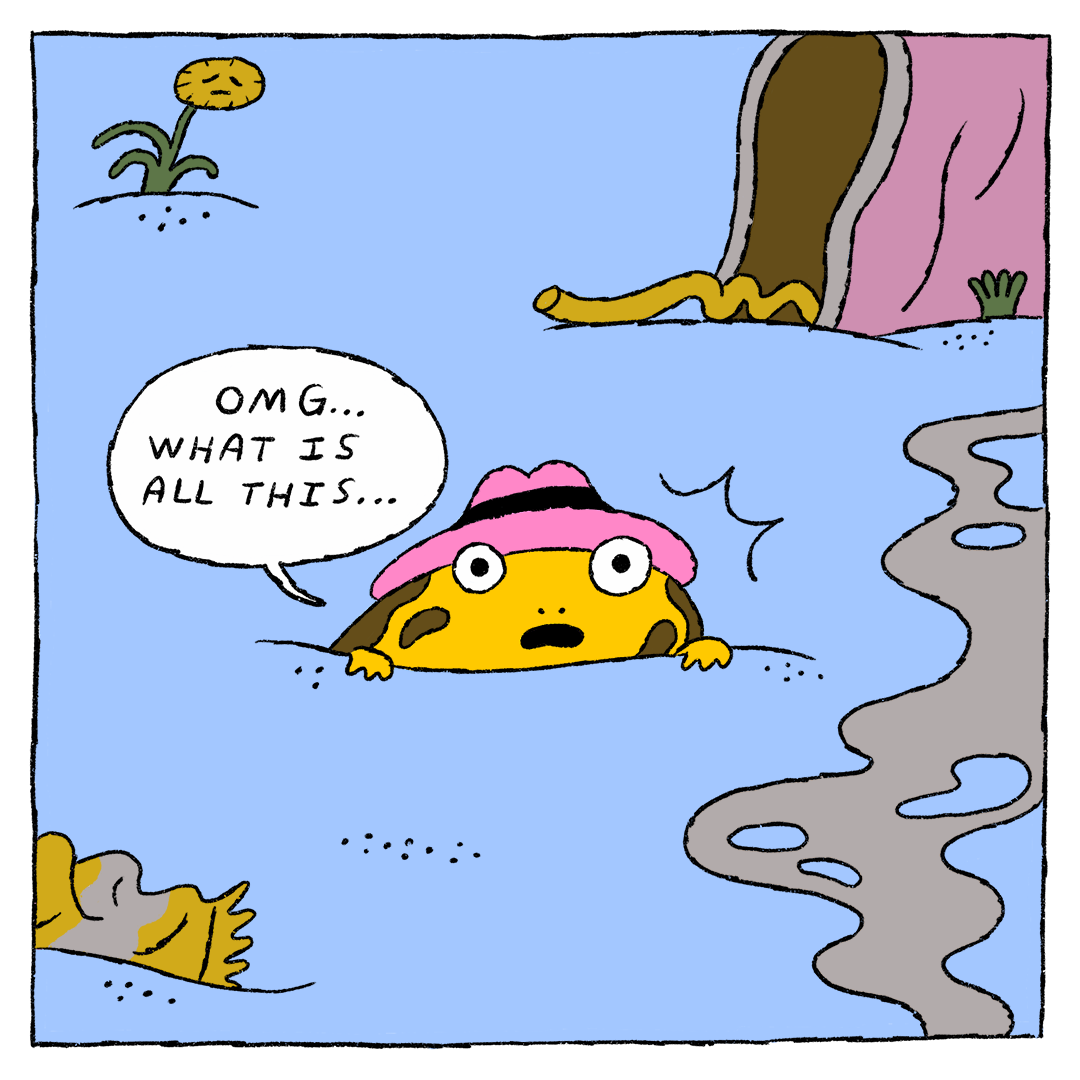




Iberian Lynx by María Medem
Local Andalusian artist María Medem remembers learning about the Iberian Lynx as a child, when, after watching several documentaries and discussing it in school, she became “extremely sad” about its predicament. “I couldn’t read or watch any news about the Lynx, because I wanted to cry,” she recalls. “I remember clearly thinking that I didn’t want to live in a world without them.”
In María’s comic, the problems facing the Iberian Lynx and its home are clear. We follow a mother and cub as they traverse the vast landscapes of Doñana in search of water and food. Rendered in María’s moody colour palette and soft textures, the national park seems like paradise, but reality sets in as we watch the lynxes encounter various man-made structures that are interfering with the ecosystem, draining precious water away from the land.









Blue Gecko by Cory Feder
The Electric Blue Gecko is another small reptile, but its most eye-catching feature is the male’s electric-blue skin. As a result of its striking appearance, it has become a highly sought-after species in the exotic pet trade, frequently taken from where it lives in the Kimboza and Ruvu Forests. In fact, 15 per cent of the Electric Blue Gecko population was illegally collected for the pet trade between 2005 and 2009 alone.
“I felt so many emotions reading through the story and thinking about the relationships between Electric Blue Geckos that are interrupted by forced relocation,” says Cory Feder, the artist behind the comic. “I thought it was so relatable, as forced migration and relocation are large parts of human history, and the loss of relationships and land is heartbreaking.” In her comic, Cory wanted to emphasise these emotions, choosing to visually anthropomorphise the Electric Blue Gecko by depicting it smiling, frowning and crying.
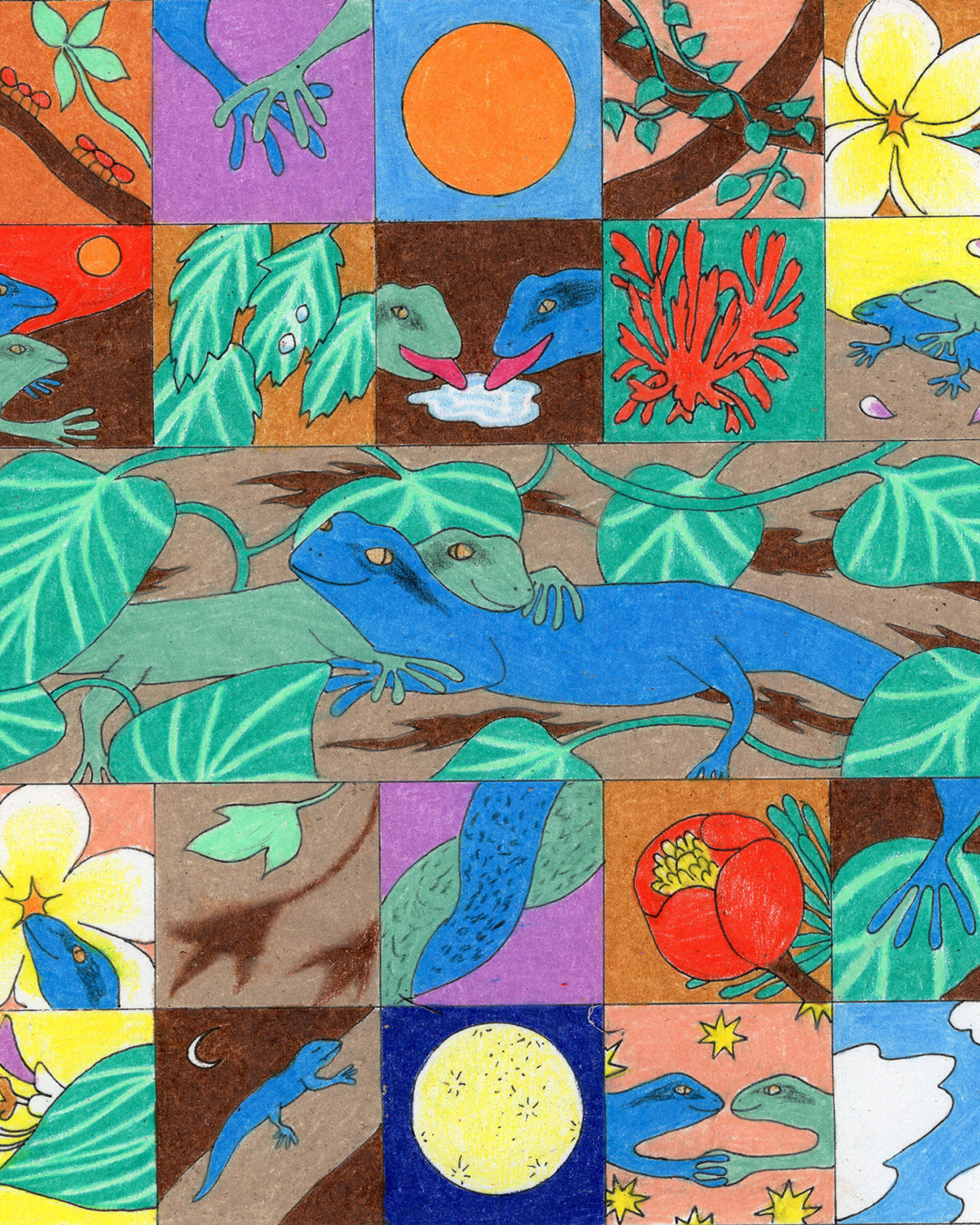
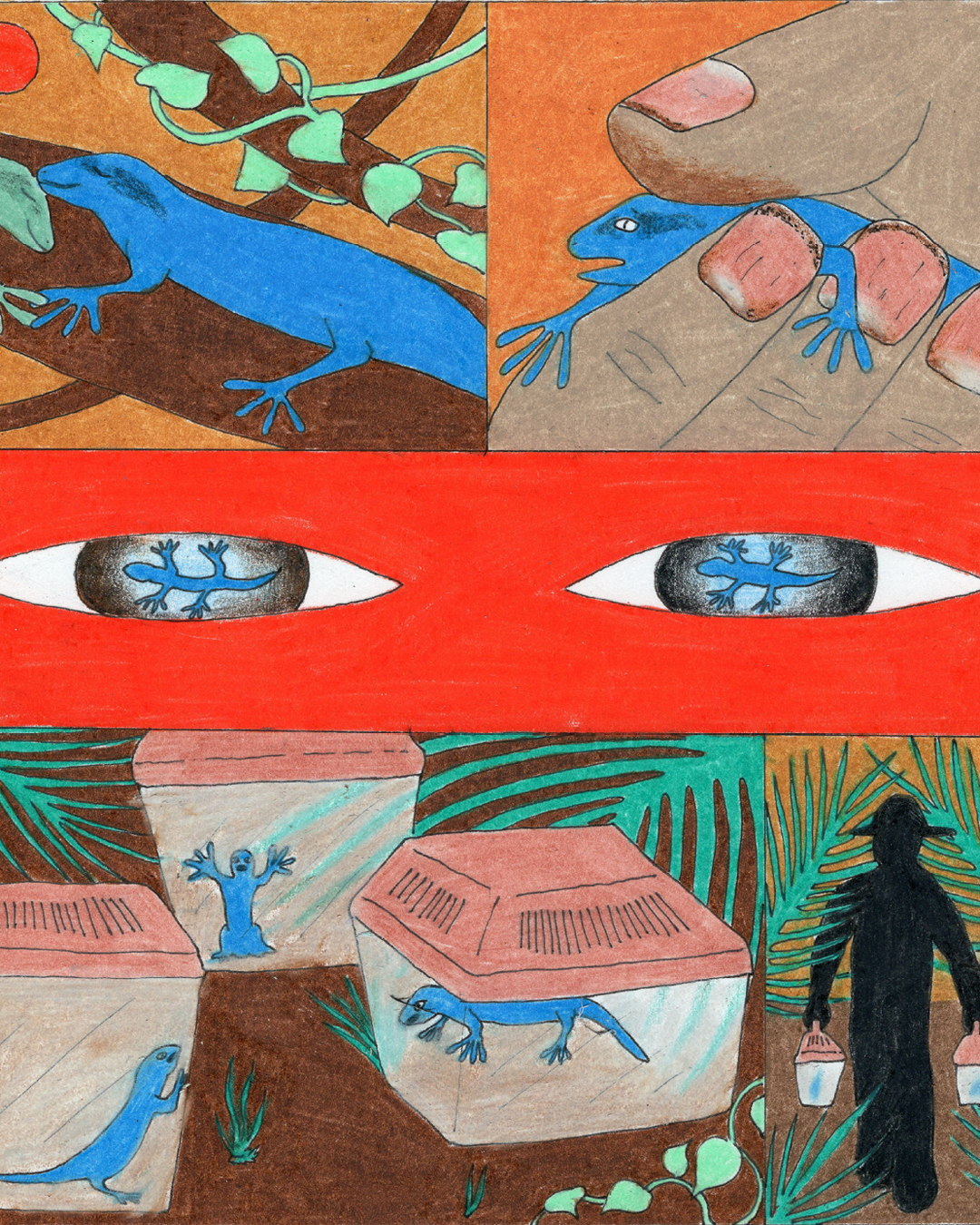
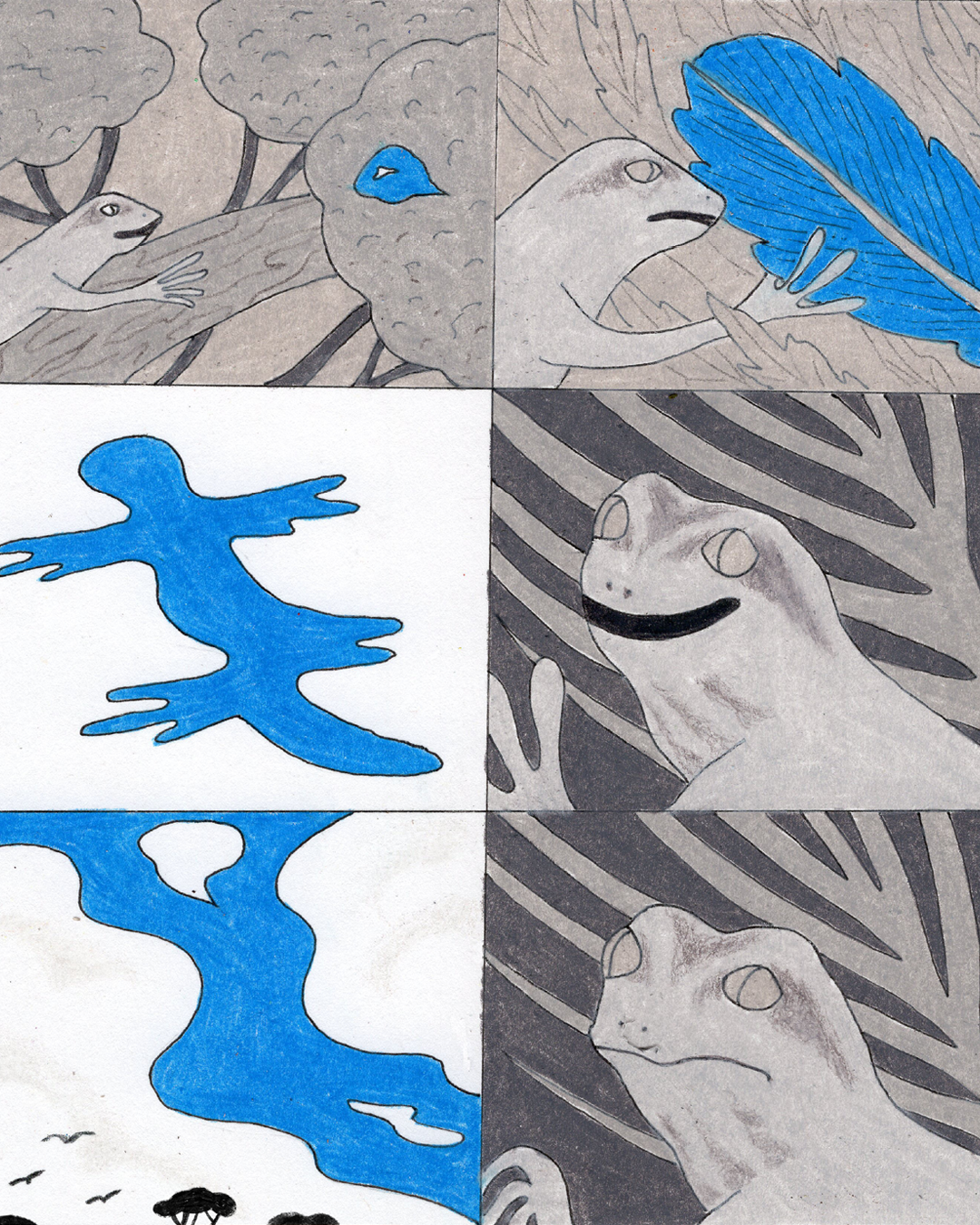
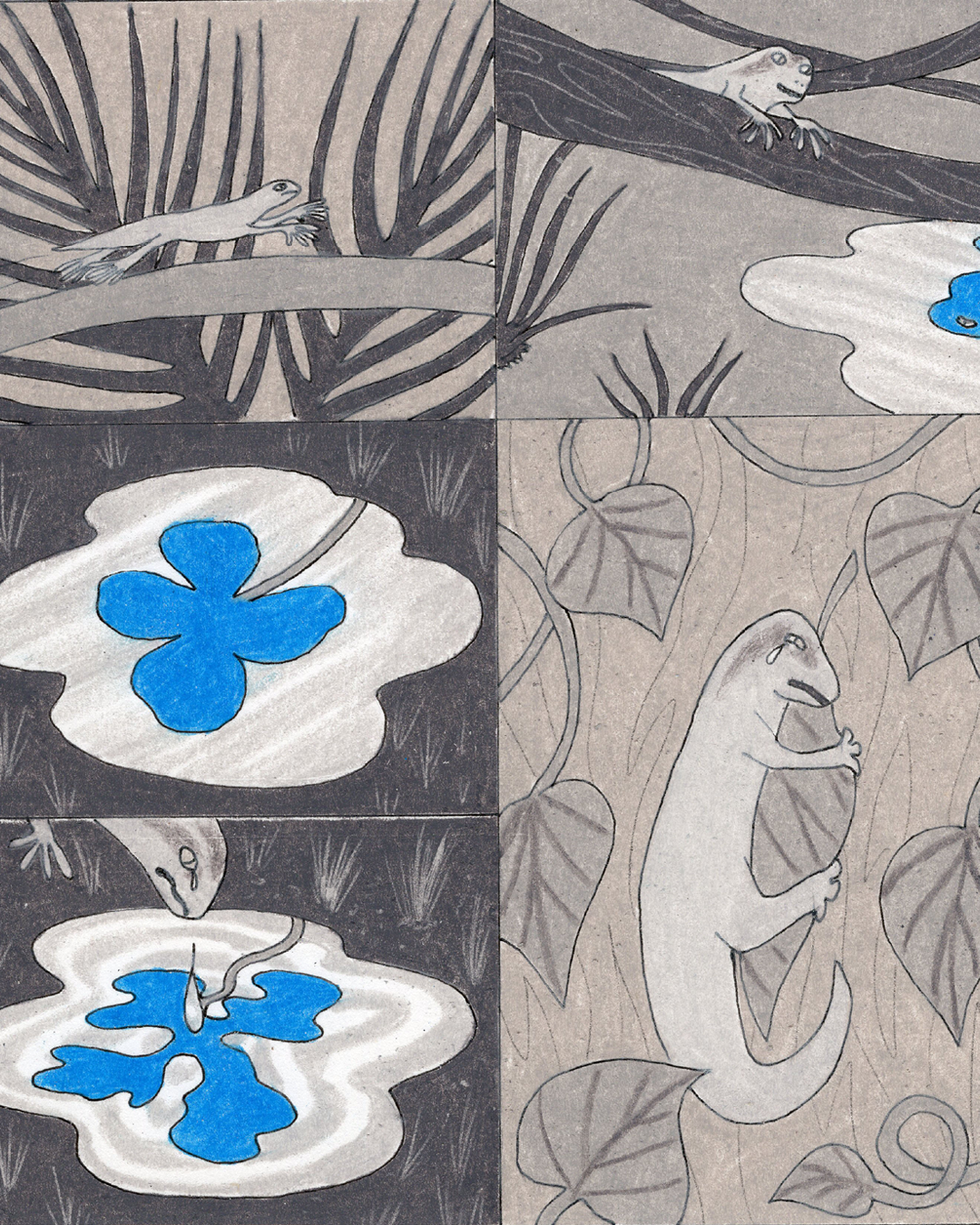
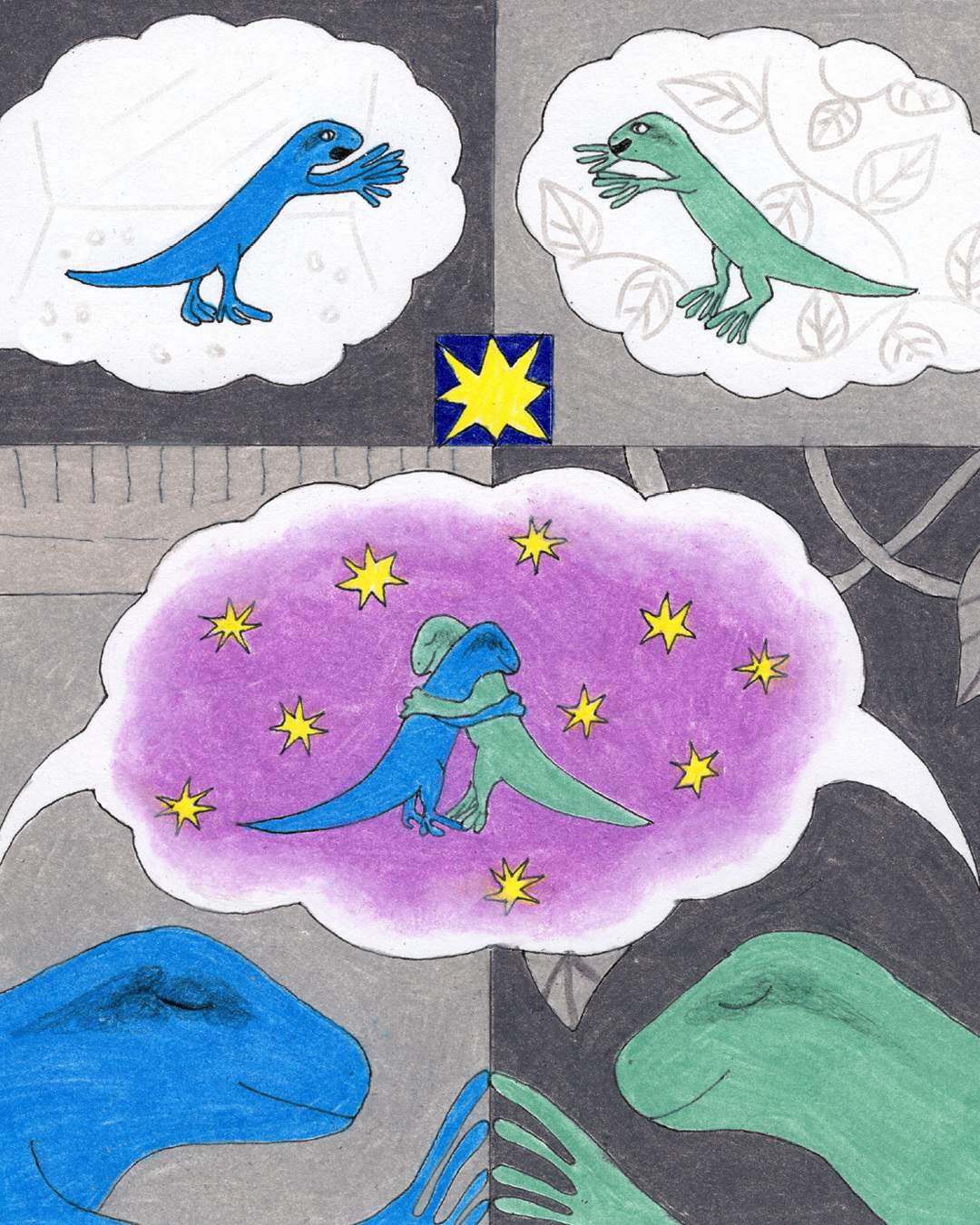

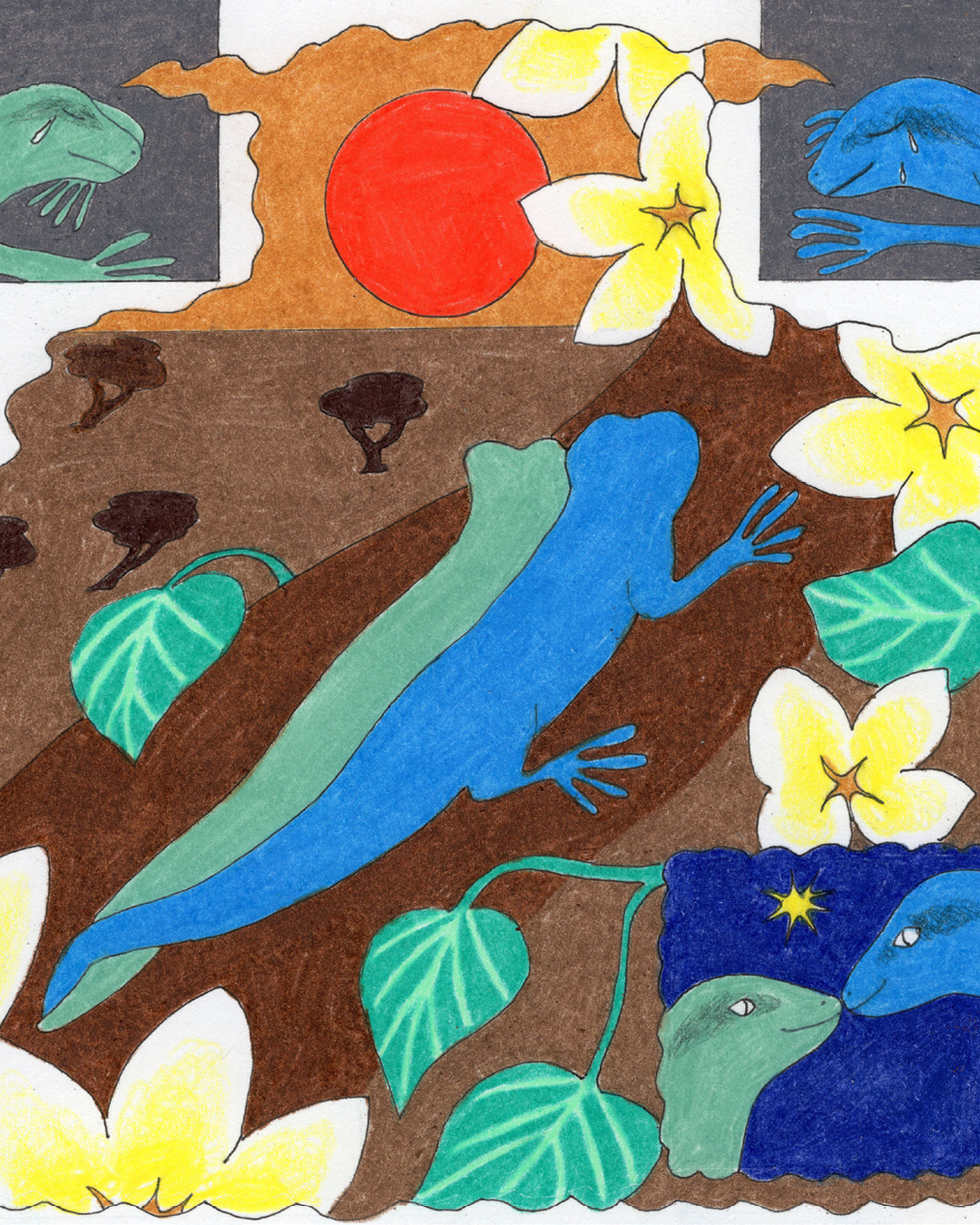
Harlequinn Shrimp by Jer Dee
Found in the tropical Indian and Pacific Oceans, the Harlequin Shrimp is a colourful crustacean whose body patterns appear in blue, purple, red and other vibrant hues. Flamboyant though they may be, these shrimps are surprisingly effective hunters, feeding exclusively on starfish that they find in their coral reef homes. This is bad news for their prey, but good news for the environment, as outbreaks of starfish, such as the Crown-of-Thorn's starfish, have been shown to have devastating effects on coral reefs, as they munch away, endangering many species.
Based in Manila, illustrator Jer Dee lives not far away from the Shrimp’s own home, and he says this was an exciting discovery. “I found it fascinating that a shrimp like that exists and that it can be found in the Philippines. Its role in the ecosystem also piqued my interest, and the fact that, despite its size, it is able to hunt prey much bigger than itself and protect the reefs at the same time.”




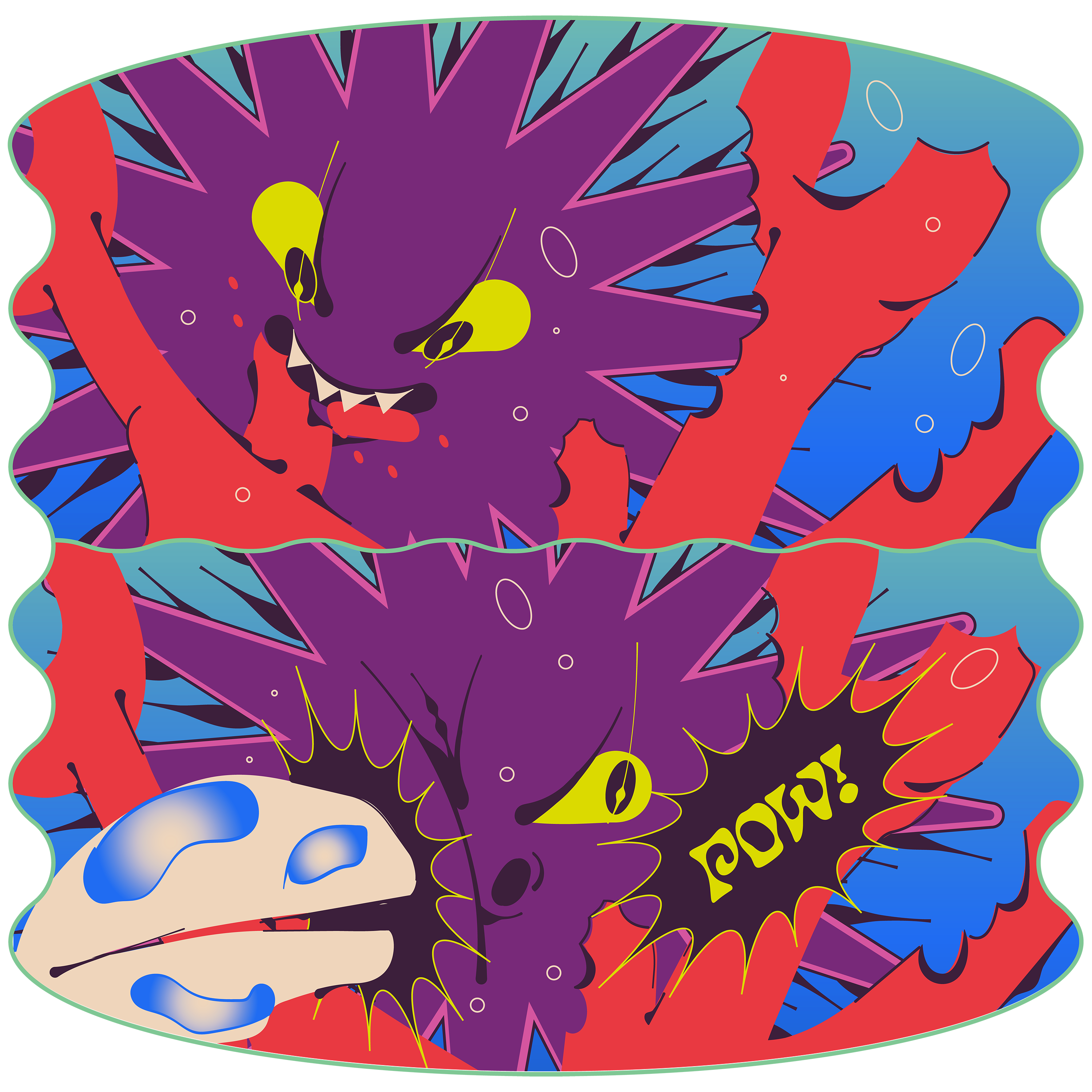




The identity design allowed for each comic to have it's own colour palette, to reflect the natural environment. The comics were also shared on Instagram and TikTok lending themselves well to the carousel format.

